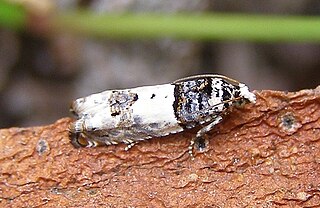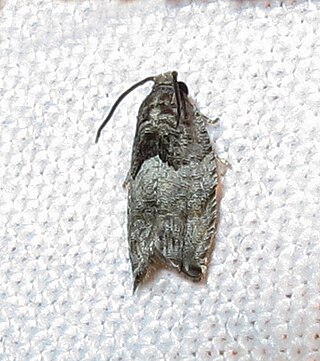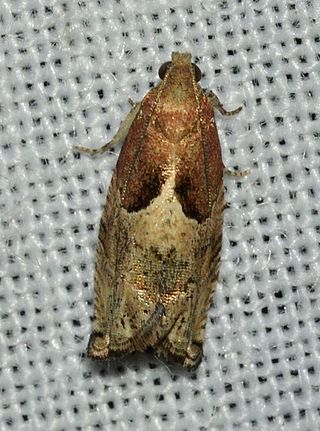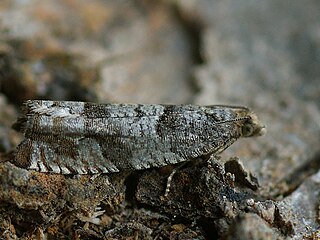
Gypsonoma is a genus of moths belonging to the subfamily Olethreutinae of the family Tortricidae.

Gypsonoma sociana is a moth of the family Tortricidae. It is found from Europe to Russia, China and Japan.

Gypsonoma aceriana, the poplar shoot-borer, is a moth of the family Tortricidae. It is found from Europe to Russia, eastern Turkey and Iraq. It is also present in North Africa.

Gypsonoma minutana, the poplar tortricid, is a moth of the family Tortricidae. It is found in Europe and North Africa, Turkey, Transcaucasia, Ural, Kazakhstan, from central Asia to Siberia and eastern Russia, Asia Minor, Iran, Afghanistan, Mongolia, China and Japan.

Gypsonoma oppressana, commonly known as the poplar bud-worm, is a moth belonging to the Tortricidae family. It is found on Madeira and in central and southern Europe, from Transcaucasia to Kazakhstan and Tajikistan.

Celypha rivulana is a small moth species of the family Tortricidae. It is found in most of Europe.

Gypsonoma haimbachiana, the cottonwood twig borer, is a moth of the family Tortricidae. It is found in eastern North America, from Canada to the Gulf Coast of the United States and west to Missouri.
Gypsonoma attrita is a species of moth of the family Tortricidae. It is found in Taiwan, Japan and the Russian Far East.
Gypsonoma bifasciata is a species of moth of the family Tortricidae. It is found in China, Korea, Japan and Russia.
Gypsonoma contorta is a species of moth of the family Tortricidae. It is found in China (Shanghai) and the Russian Far East.
Gypsonoma distincta is a species of moth of the family Tortricidae. It is found in China.
Gypsonoma mica is a species of moth of the family Tortricidae. It is found in China and Russia.
Gypsonoma mutabilana is a species of moth of the family Tortricidae. It is found in China (Tibet) and Russia.
Gypsonoma phaeocremna is a species of moth of the family Tortricidae. It is found in China.
Gypsonoma rubescens is a species of moth of the family Tortricidae. It is found in China.

Gypsonoma salicicolana is a species of moth of the family Tortricidae. It is found in North America, where it has been recorded from Quebec to Florida, west through Texas to California and north to Alberta.
Gypsonoma obraztsovi is a species of moth of the family Tortricidae. It is found in Iran, Syria, Hungary and Romania.
Euura vesicator is a species of sawfly belonging to the family Tenthredinidae. The larvae feed internally in a gall on the leaves of purple willow and its hybrids. It was first described by Johann Jacob Bremi-Wolf in 1849.

Euura viminalis is a species of sawfly belonging to the family Tenthredinidae. The larva feed within galls on the leaves of willows. It was first described by Carl Linnaeus in his landmark 1758 10th edition of Systema Naturae.

Gypsonoma nitidulana is a moth belonging to the family Tortricidae first described by Friederike Lienig and Philipp Christoph Zeller in 1846.













